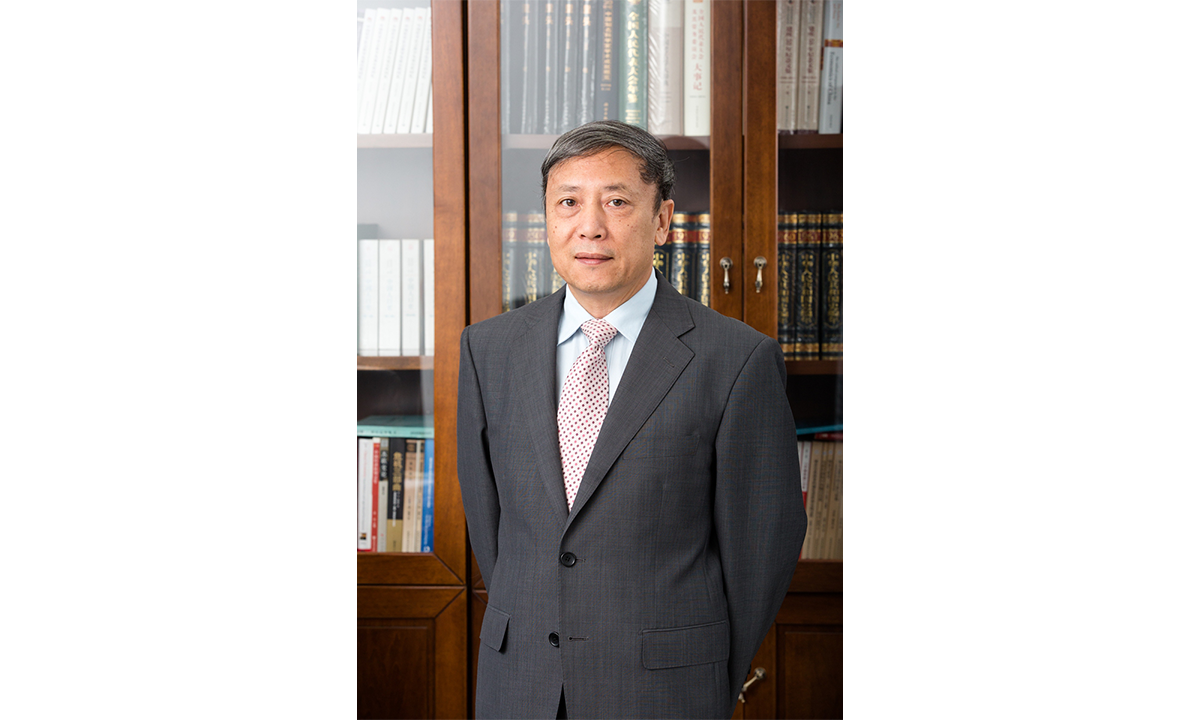China has strong economic prospects despite losing rank of most populous nation: top demographer
Country has strong economic prospects despite losing rank of most populous nation: top demographer


Children ride hoverboards at a kindergarten in Nanjing, capital of East China's Jiangsu Province on April 21, 2023. Photo: VCG
Editor's Note:
The United Nations Population Fund has released its State of World Population Report for 2023, which says that India's population by mid-2023 is estimated at 1.4286 billion, surpassing China's 1.4257 billion and making India the world's most populous nation. Last year, China recorded its first negative population growth in nearly 61 years. What does the loss of the rank of "world's most populous nation" mean for China? What new challenges will negative population growth bring for China's economy? Cai Fang (Cai), chief expert at the National High-end Think Tank of the Chinese Academy of Social Sciences and author of The Era of Negative Population Growth, told the Global Times (GT) reporter Yang Shasha in an exclusive interview that there is no need to worry, and that negative population growth does not change the expectation that China will become the world's largest economy.

Cai Fang Photo: Courtesy of Cai Fang
GT: China and India have been the two most populous nations in the world. Is there any historical experience that can prove that being the most populous nation in the world leads to an economic power?
Cai: You could say that before the industrial revolution, but it may not be the case after the industrial revolution. The scientific and technological revolution constantly expands the new boundary of production factors, creating new factors and resources. So being "the world's most populous nation" no longer matters. The key is to maintain economic growth and join the ranks of high-income countries as scheduled.
According to Joseph Needham, a British scholar, before 1600, Chinese technological innovation led the world. Then, the proportion of the Chinese population to the world's total grew continuously, but China no longer held the leading position in science and technology in post-industrial revolution era. After the Opium War, China was bullied and trapped in poverty and weakness. This led to "the Needham Puzzle:" Why didn't the scientific and industrial revolution take place in modern China, given the important contributions made by China to human science and technological development in ancient times?
Over the years, people have been trying to solve the puzzle. To a certain extent, China's development in the reform and opening-up period has answered "the Needham Puzzle." Through reform and opening-up, China released the rural labor force to advance the large-scale modernization process, raising the per capita GDP. In other words, since modern times, China has had a population advantage, but if it hadn't achieved real development, then the demographic dividend would not have been capitalized on and directly transformed into economic power. Even though China's demographic structure is becoming less favorable, higher-level reform and opening-up can still tap into the potential of the demographic dividend. Since this is about deepening reform, I would rather call it "reform dividend."
GT: According to the UN report, the US will be the third-most populous nation, with an estimated 340 million people by mid-2023. You think China's reference should be the US and not India - why do you say that?
Cai: China's 14th Five-Year Plan(2021-25)mentioned that per capita GDP will reach the level of moderately developed countries by 2035, meaning that China's total economic output will surpass that of the US around 2030. Specifically, that is to say per capita GDP will reach $23,000 in 2035. That requires us to maintain GDP growth at around 5 percent during the period until 2035, doubling the US' potential growth rate of 2 percent or so, to become the world's largest economy. Therefore, it makes sense for us to compare ourselves to the US for some time to come. But it doesn't mean our goal is all about pegging with the US. Rather, by our own goal, the natural result should be China being the world's largest economy by 2035.
GT: In 2022, China's population has entered a negative growth track, so China's population might have reached its peak eight years ahead of schedule. Does this affect China's ability to become the world's largest economy?
Cai: According to our forecast, China's potential growth from 2021 to 2035 has dropped from the original forecast of 4.84 percent to the latest forecast of 4.53 percent. The reduced potential growth rate does not substantially prevent China from becoming a "moderately developed country" in 2035. And there is still the reform dividend: If higher-level reforms significantly increase productivity, they can also increase the potential growth rate.
GT: From an industrial perspective, will the aging population and negative population growth bring new opportunities for the Chinese economy?
Cai: Seniors can also become a unique consumer group, according to the experience of Japan, Europe and the US. Emerging consumption demands for daily necessities and nursing care for the elderly are new opportunities for industries.
Regarding consumption, the proportion of Chinese people's consumption expenditure in GDP is relatively low by international standards. China's population accounts for 17.9 percent of the world's population, and household consumption expenditure accounts for only 12.8 percent. If this gap between China's share in the world's consumption and population can be narrowed, the total consumption expenditure of Chinese residents can be increased by 39.4 percent, which is even greater than each of the total consumption of Japan, Germany, the UK and India. This is China's large-scale population effect.
There is also potential in housing. Some people question that if the population is decreasing, do we still need so many houses? The answer is yes. For example, when 172 million migrant workers become urban residents, they definitely need to improve their housing conditions. China's urbanization, especially the urbanization rate of the registered population is only 47 percent, which is still far from the 80 percent urbanization rate of a high-income country. This means there is still huge potential for housing demand.
In addition, there is great potential in parenting and education. As China's population decreases, it must be supplemented by quality, which means increasing the time people spend in education. On the basis of the current nine-year compulsory education, by extending preschool education and senior high school for three years each could substantially increase years of schooling of the population.
GT: Western countries, led by the US, are pushing to "decouple" from China, and China is experiencing negative population growth internally. Do you think it will have an impact on the Chinese economy? What role can China play in the process of reshaping globalization?
Cai: The International Monetary Fund estimated that US-China "decoupling" could cause losses of up to 2 percent of global GDP, which would eventually be spread across countries. The more extreme the move to take sides, the heavier the damage will be. So, sooner or later, countries will make the choice that best serves their own interests, rather than being coerced or influenced by other countries.
As the largest "ally" of the US, Europe has reflected on the undesirable results of following the American baton, and many have expressed their willingness to avoid the Cold War and "decoupling." This is what French President Emmanuel Macron meant when he proposed that Europe should seek "strategic autonomy" after his visit to China.
We also see that the Global South, the BRICS, ASEAN, Latin America, Africa, the Middle East and other regions and blocs have all shown this intention to avoid taking sides, and have acted accordingly to cooperate with China.
As you can see, reaping the peace dividend and the benefits of economic globalization is not a zero-sum game. China can still reap the dividends of further opening-up. In the midst of profound changes unseen in a century, combined with the changed trend of globalization and the changed stage of China's development, the country has three advantages and strategic choices in its economic opening-up: The first is to supplement comparative advantages with scale economy (agglomeration effect, supporting capacity, and the sizable market); the second is to avoid risks while expanding trade and transnational investment with more diversified and multi-polar partners; the third is to accelerate scientific and technological innovation, enhance industrial value chain status, and maintain a higher level of self-reliance while gaining a higher level of dynamic comparative advantages.


